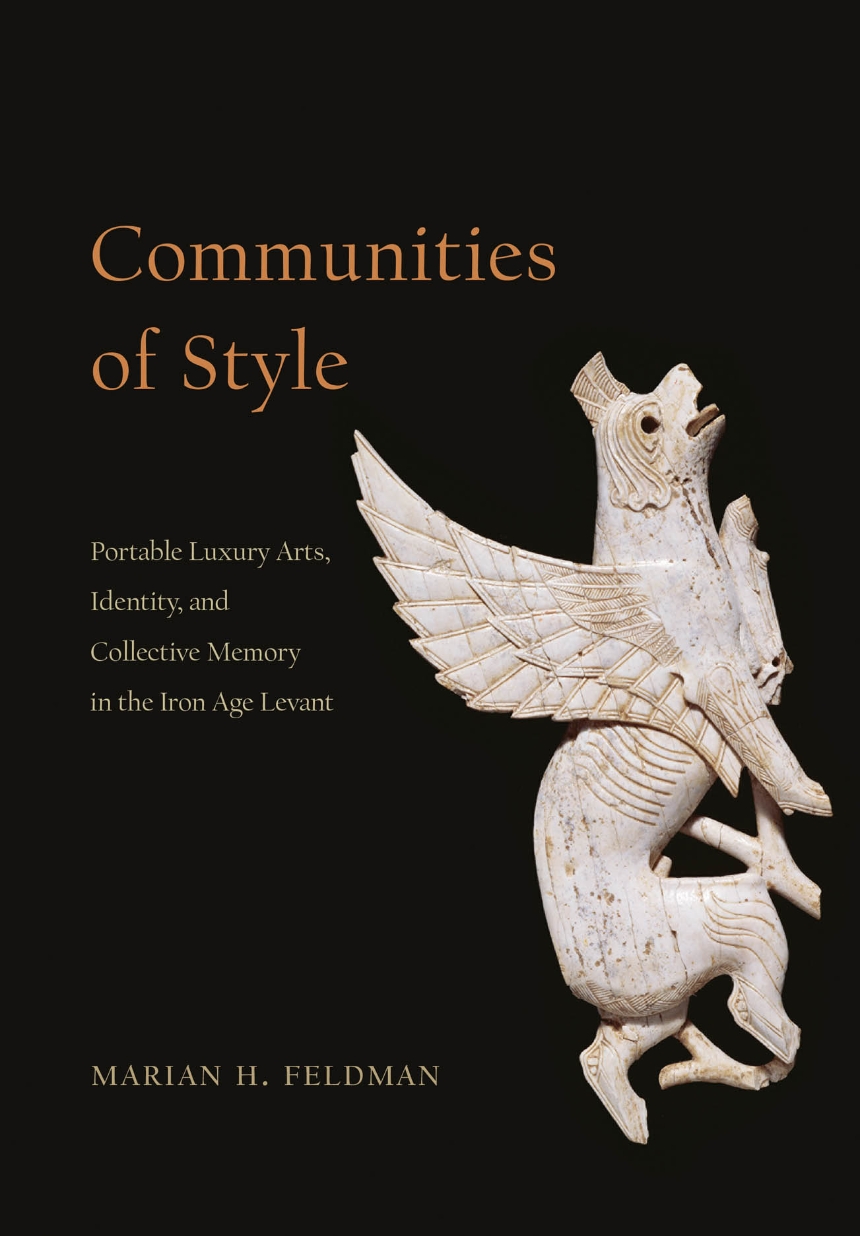Communities of Style
Portable Luxury Arts, Identity, and Collective Memory in the Iron Age Levant
9780226105611
9780226164427
Communities of Style
Portable Luxury Arts, Identity, and Collective Memory in the Iron Age Levant
Communities of Style examines the production and circulation of portable luxury goods throughout the Levant in the early Iron Age (1200–600 BCE). In particular it focuses on how societies in flux came together around the material effects of art and style, and their role in collective memory.
Marian H. Feldman brings her dual training as an art historian and an archaeologist to bear on the networks that were essential to the movement and trade of luxury goods—particularly ivories and metal works—and how they were also central to community formation. The interest in, and relationships to, these art objects, Feldman shows, led to wide-ranging interactions and transformations both within and between communities. Ultimately, she argues, the production and movement of luxury goods in the period demands a rethinking of our very geo-cultural conception of the Levant, as well as its influence beyond what have traditionally been thought of as its borders.
Marian H. Feldman brings her dual training as an art historian and an archaeologist to bear on the networks that were essential to the movement and trade of luxury goods—particularly ivories and metal works—and how they were also central to community formation. The interest in, and relationships to, these art objects, Feldman shows, led to wide-ranging interactions and transformations both within and between communities. Ultimately, she argues, the production and movement of luxury goods in the period demands a rethinking of our very geo-cultural conception of the Levant, as well as its influence beyond what have traditionally been thought of as its borders.
264 pages | 20 color plates, 41 halftones, 3 line drawings | 7 x 10 | © 2014
Art: Middle Eastern, African, and Asian Art
History: Ancient and Classical History
Reviews
Table of Contents
List of Illustrations
Author’s Note
Acknowledgments
Introduction
Ivories and Metalworks in a Levantine Context
Networks and Communities in the Early Iron Age
1 Workshops, Connoisseurship, and Levantine Style(s)
First-Millennium Levantine Ivories
Connoisseurship and the Study of the Ancient Near East
Attributing Levantine Ivories
The Mobility of Style
Slippery Identities
Conclusions
2 Levantine Stylistic Practices in Collective Memory
The Problem of Artistic Intentionality
Rendering Animals and the Logic of Stylistic Practice
Habitus in Levantine Style
Stylistic Practices in Collective Memory
Late Bronze Age Memories in the Early Iron Age
Continuity, Rediscovery, or Invention?
Remembering a Golden Age
Conclusions
3 Creating Assyria in Its Own Image
An Assyrian Court Style
Assyrian Representations of Foreign Items
The Dangerous Other: Booty, Tribute, Gods, and Deportees
Foreign Goods in Assyria
Stylistic Assyrianization
Ashurbanipal’s Garden Scene
Assyria and Babylonia
Conclusions
4 Speaking Bowls and the Inscription of Identity and Memory
Levantine (“Phoenician”) Metal Bowls
The Inscription of Identity and Memory
Drinking and Death
Temporality and Presence
The Enchantment of Imagery
Conclusions
5 The Reuse, Recycling, and Displacement of Levantine Luxury Arts
After the Fall: Mobility post Assyrian Empire
Ivory in and around the Assyrian Empire
Secondhand Elites
The Booty of Haza’el of Damascus
Conclusions: Displacements, Values, and Meanings
Conclusion
Theoretical Considerations
Glancing Back, Casting Ahead
Notes
References
Index
Author’s Note
Acknowledgments
Introduction
Ivories and Metalworks in a Levantine Context
Networks and Communities in the Early Iron Age
1 Workshops, Connoisseurship, and Levantine Style(s)
First-Millennium Levantine Ivories
Connoisseurship and the Study of the Ancient Near East
Attributing Levantine Ivories
The Mobility of Style
Slippery Identities
Conclusions
2 Levantine Stylistic Practices in Collective Memory
The Problem of Artistic Intentionality
Rendering Animals and the Logic of Stylistic Practice
Habitus in Levantine Style
Stylistic Practices in Collective Memory
Late Bronze Age Memories in the Early Iron Age
Continuity, Rediscovery, or Invention?
Remembering a Golden Age
Conclusions
3 Creating Assyria in Its Own Image
An Assyrian Court Style
Assyrian Representations of Foreign Items
The Dangerous Other: Booty, Tribute, Gods, and Deportees
Foreign Goods in Assyria
Stylistic Assyrianization
Ashurbanipal’s Garden Scene
Assyria and Babylonia
Conclusions
4 Speaking Bowls and the Inscription of Identity and Memory
Levantine (“Phoenician”) Metal Bowls
The Inscription of Identity and Memory
Drinking and Death
Temporality and Presence
The Enchantment of Imagery
Conclusions
5 The Reuse, Recycling, and Displacement of Levantine Luxury Arts
After the Fall: Mobility post Assyrian Empire
Ivory in and around the Assyrian Empire
Secondhand Elites
The Booty of Haza’el of Damascus
Conclusions: Displacements, Values, and Meanings
Conclusion
Theoretical Considerations
Glancing Back, Casting Ahead
Notes
References
Index
